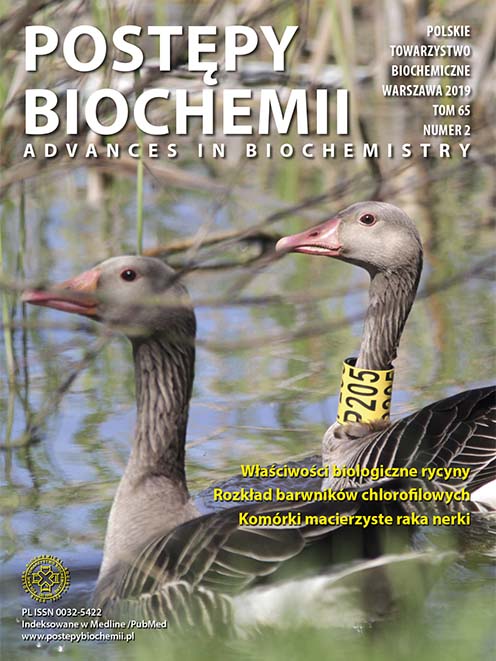The presence of ribonucleotides in DNA has an ambiguous impact on the maintenance of genetic stability
DOI:
https://doi.org/10.18388/pb.2019_247Abstract
High replication fidelity, understood as the DNA polymerasesâ ability to select nucleotides with both correct base and sugar, is of critical importance for maintaining the genetic stability. Due to the fact that the cellular levels of ribonucleotides are much higher than the concentrations of deoxyribonucleotides, replicative polymerases are able to incorporate ribonucleotides with up to 1000-fold higher frequency than mismatched deoxyribonucleotides. The ability to discriminate against ribonucleotides by the DNA polymerases relies on the steric gate residue in the enzymeâs catalytic centre. Despite the fact that ribonucleotides are the most abundantly inserted incorrect nucleotides in DNA, they are not observed in properly functioning cells. The major pathway responsible for the recognition and removal of ribonucleotides from DNA is called Ribonucleotide Excision Repair. The impairment of ribonucleotide removal pathways can cause increased mutation rate, replication stress, DNA breakage, problems with transcription, chromatin structure maintenance, genetic disorders and cell death. In spite of that, ribonucleotide incorporation into DNA may have some positive biological impact, stimulating mismatch repair and non-homologous end joining.
Downloads
Published
Issue
Section
License
All journal contents are distributed under the Creative Commons Attribution-ShareAlike 4.0 International (CC BY-SA 4.0) license. Everybody may use the content following terms: Attribution — You must give appropriate credit, provide a link to the license, and indicate if changes were made, ShareAlike — If you remix, transform, or build upon the material, you must distribute your contributions under the same license as the original. There are no additional restrictions — You may not apply legal terms or technological measures that legally restrict others from doing anything the license permits.
Copyright for all published papers © stays with the authors.
Copyright for the journal: © Polish Biochemical Society.




